| |
|
|
| [ Go Back ] |
| STUDIES - Fossils around the world |
| |
| 1-Vertebrate |
|
| |
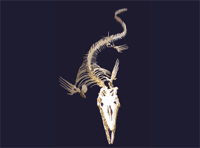 |
 |
1.1 Marine Reptile
Marine reptiles are reptiles which have become secondarily adapted
for an aquatic or semi-aquatic life in a marine environment.
More |
| |
|
|
|
| |
 |
 |
1.2 Dinosaur and Birds
Dinosaurs were the dominant vertebrate animals of terrestrial ecosystems for over 160 million years, from the late Triassic period (about 230 million years ago) until the end of the Cretaceous period (65 million years ago), when most of them became extinct in the Cretaceous–Tertiary extinction event.
More |
|
| |
 |
 |
1.3 Mammals
Mammals are a class of vertebrate animals characterized by the possession of mammary glands, from which they derive their name, as well as sweat glands, hair, three middle ear bones used in hearing, and a neocortex region in the brain.
More |
|
|
|
| |
| 2-Invertebrate |
|
| |
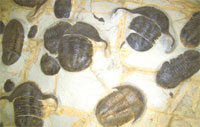 |
 |
2.1 Arthropods
Phylum Arthropoda (arthropods) includes the insects, arachnids, crustaceans, and other fossil organisms like trilobites. Arthropods are characterized by their jointed limbs and cuticles (they own an eso-skeleton), which are mainly made of α-chitin; the cuticles of crustaceans and trilobites are also biomineralized with calcium carbonate.
More |
|
| |
2.2 Cephalopads
Phylum Arthropoda (arthropods) includes the insects, arachnids, crustaceans, and other fossil organisms like trilobites. Arthropods are characterized by their jointed limbs and cuticles (they own an eso-skeleton), which are mainly made of α-chitin; the cuticles of crustaceans and trilobites are also biomineralized with calcium carbonate.
|
|
| |
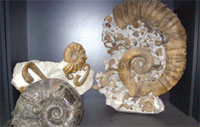
(Click on the photo to enlarge) |
 |
2.3 Amonites
Ammonites are an extinct group of marine animals of the subclass Ammonoidea in the class Cephalopoda, phylum Mollusca. They are excellent index fossils, and it is often possible to link the rock layer in which they are found to specific geological time periods.
In the left side is shown the Lytoceras type (lower Jurassic) and on the right side the Emericiceras (Barremien, lower Cretaceous) one.
Country: France
72 x 52 cm
(Original specimens preserved in Gannat - Eldonia SAS) |
|
| |
|
|
2.4 Echinoderme
In plants, it is a thin layer of parenchyma found in roots, just outside the vascular cylinder. It regulates water flow. It consists of a single-celled ring which forms a selective barrier between the outer cortex and the inner pericycle tissue.
Oiginal Thaumatocrinus Trias
Country: china -
Dimensions: 160 X 160 cm
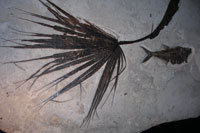
(Click on the photo to enlarge)
|
|
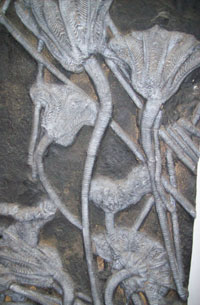
(Click on the photo to enlarge) |
|
|
|
|
|
| |
| 3-Plants |
| |
| Plants that flourished on earth millions of years ago are perfectly preserved as fossils. In petrified wood, the tissue of ancient trees is completely replaced by minerals, converting trunks and branches into stone. In some cases, the cell structure is so perfectly preserved that it resembles microscopic stem sections of modern plants. |
| |
|
|
|
